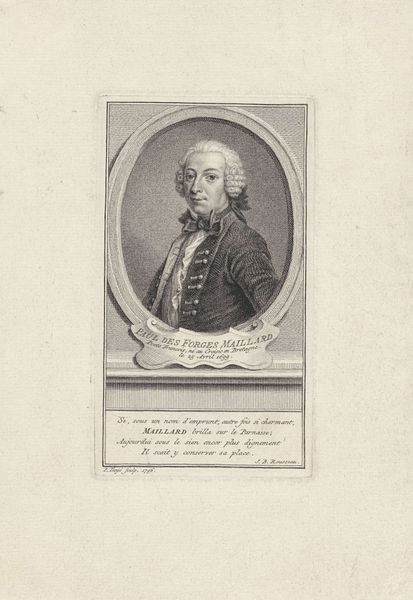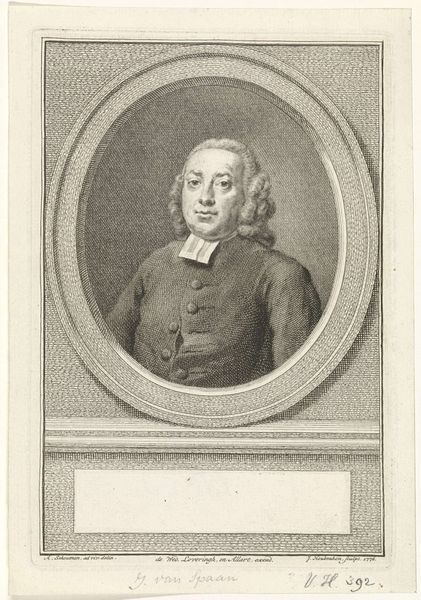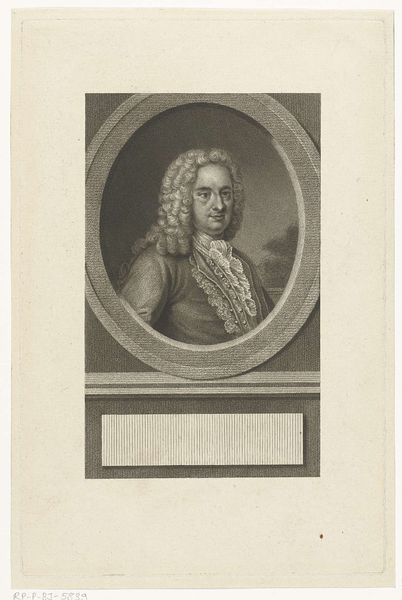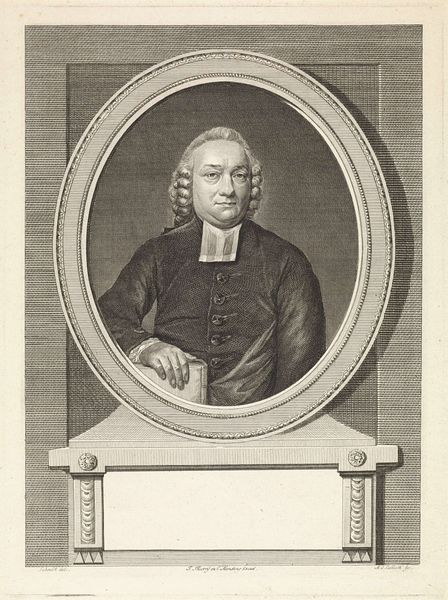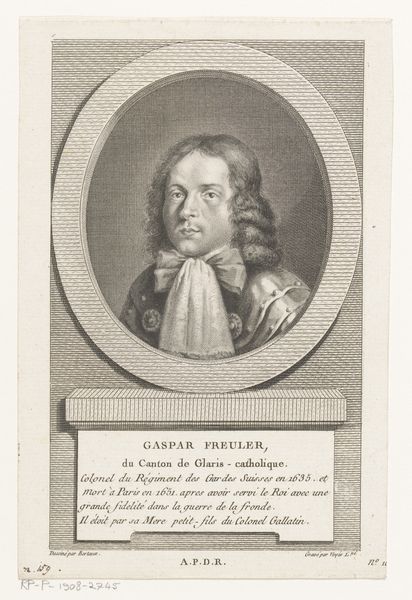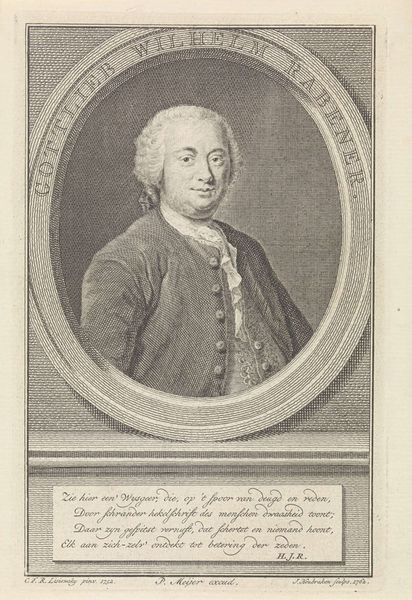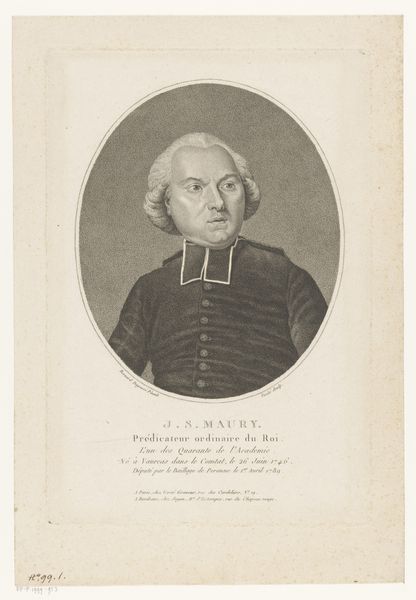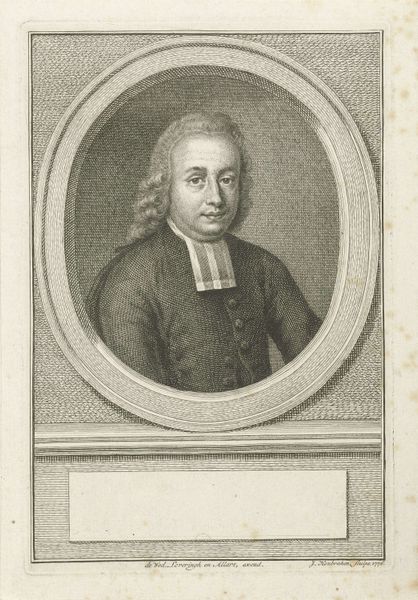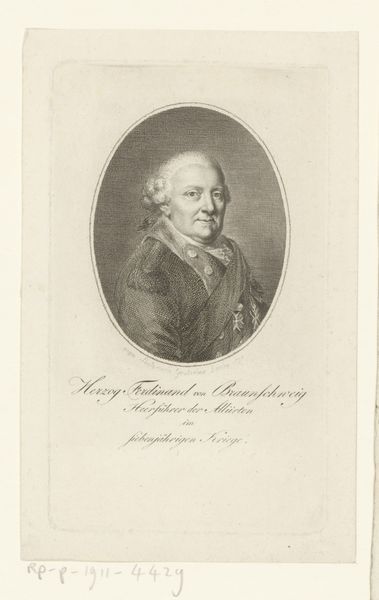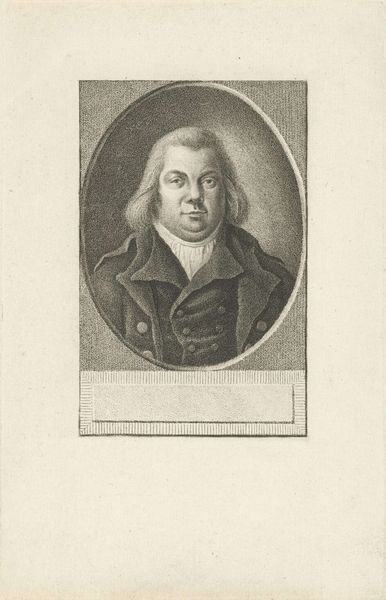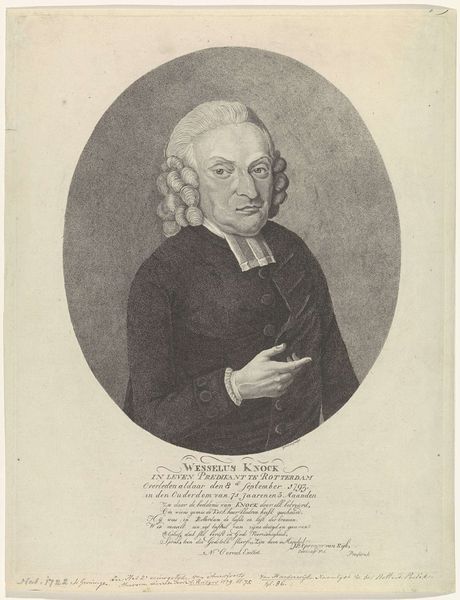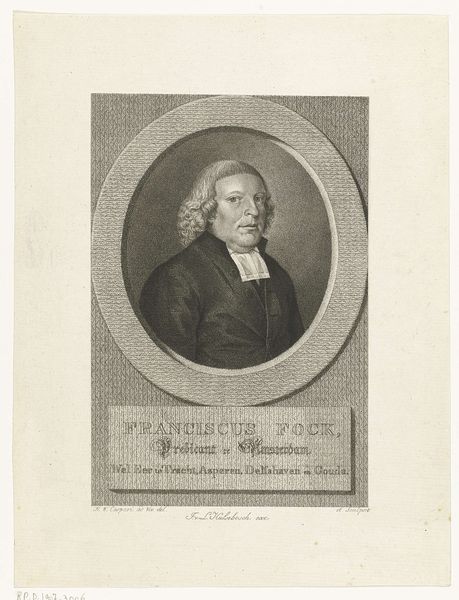
print, engraving
portrait
neoclacissism
academic-art
engraving
realism
Dimensions: height 141 mm, width 87 mm
Copyright: Rijks Museum: Open Domain
Curator: Here we have an engraving from around 1800, a portrait of Franz Carl Alter by Anton Wachsmann. Editor: It strikes me as a study in texture. The starkness of the engraving medium, with its fine, controlled lines, gives Alter's face and clothing an almost tangible quality. Curator: Absolutely. It's fascinating how the medium of printmaking was used to disseminate images of prominent figures. Alter, a professor of philosophy and Greek, is presented here with an air of scholarly authority. Printmaking made his likeness accessible to a broader public, reinforcing his status and the values of education. Editor: The meticulous labor involved in engraving, all those tiny deliberate marks, it’s easy to overlook how the reproduction, how it connects with the social role that printing filled back then and even to this day. Curator: It speaks to the Enlightenment ideals of knowledge and accessibility, doesn’t it? Portraiture in this style became a way of enshrining intellectual and social elites. Consider the context of patronage as well. Engravings like this often served as commissions, furthering the artist's career and legitimizing the sitter's place in society. Editor: True, but it's also a record of skilled work. The engraver, Anton Wachsmann, had to deeply understand the properties of his tools and materials to create such an effective image, acting as an artisan rather than an individual artist. Curator: An interesting perspective. Though portraits tend to fix an idealized persona, in an art environment. Yet what happens after? I suppose many will have been widely dispersed through trade or journals, reaching potentially very wide audiences through a whole variety of venues. Editor: Precisely. We are drawn back to materiality in thinking about production, dispersal, and usage of artwork outside gallery walls, but equally of skilled artisans and the whole infrastructure of 19th-century manufacturing that makes all this possible. Curator: Thank you, that gives a more tangible feeling for the subject and its value for us today. Editor: An excellent starting point, I believe, for appreciating what is too easy to consider as merely quaint artwork.
Comments
No comments
Be the first to comment and join the conversation on the ultimate creative platform.
